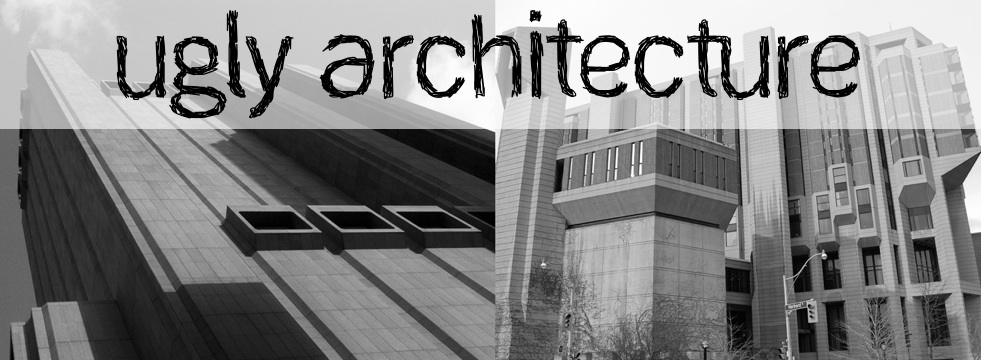Tax Increment Financing as Cure for Ugly Buildings. Do a Google search for ugly buildings and you’ll enter a world of cold, gray, cement structures that have a dreary Gotham City look to them. Ugly buildings, businesses, and factories are an icon of what happens when capitalism is given neither carrots or sticks to guide it. Among the most noted ugly buildings are the AT&T Long Lines buildings. They are the ultimate example of efficient, cost effective, and utilitarian structures. Great for a science fiction dystopian movie set, but not so great for humans.
Some defend ugly architecture stating, “Even horrendously ugly and soulless abominations are part of our architectural heritage.” [source] Yet those who know the human psychological and physiological impact of our urban surroundings point out the value of more attractive structures.
TIF as Cure for Urban Stagnation. There is little business incentive to create attractive buildings. Similarly, there is little business incentive to concern oneself with how the space is used, as long as it’s profitable. Today there are plenty of ways business can get fined and punished, but fewer ways they get rewarded for improving the quality of life in our communities. The TIF is one way to offer a carrot (incentive) to developers who choose to build attractive buildings that will also function to revitalize urban areas. The increased taxes more than repay the funding provided.
Because there is little or no profit gained from building attractive multi-use spaces, the TIF helps make it economically feasible for developers to construct them. Rather than constructing poured cement buildings that are bunker-like in appearance to be used for night clubs, bars, pawn shops, casinos, tobacco stores, brothels, and stores selling fire arms, architects and developers can have the freedom to build attractive buildings and rent them out to more appropriate (although less profitable) businesses for urban revitalization.
TIF Defined. Wikipedia offers an exceptional definition of Tax Increment Financing:
Tax Increment Financing, or TIF, is a public financing method that is used for subsidizing redevelopment, infrastructure, and other community-improvement projects in many countries, including the United States. Similar or related value capture strategies are used around the world.
If the cost of basic services increases, with TIF in place, the result is a revenue shortfall that has to be paid from sources other than tax revenues of the TIF district.
TIF is a method to use future gains in taxes to subsidize current improvements, which are projected to create the conditions for said gains. The completion of a public project often results in an increase in the value of surrounding real estate, which generates additional tax revenue. Sales-tax revenue may also increase, and jobs may be added, although these factors and their multipliers usually do not influence the structure of TIF. [More…]
Ideal Example of TIF. An ideal example of TIF usage and how this can benefit a community is found in Iowa City. [source] A property currently producing $23,302 in taxes will generate $234,792 annually after it’s developed by the Moen Group. It doesn’t take long before the $2.5 million will be recuperated. According to the Wikipedia definition above, this is an excellent example because the increment in taxes will pay for the original investment.
Further Reading. Below are additional resources offering information about TIF economics.
